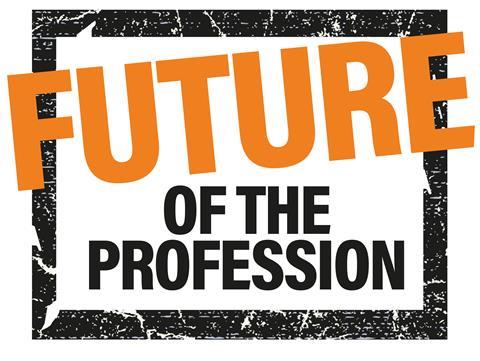For the second of her two-part look at the Future of the Profession, Eleanor Jolliffe takes the RIBA’s pilot health & safety test

In my last column I mentioned in passing the RIBA pilot health and safety test. I’ve now taken it. I am tentatively in favour of competence testing but I hate multiple choice questions with a passion. My brain has an annoying tendency to distrust certainty, so does not respond well to four statements of which two “could” be correct, but only one is. As a result I tend to overthink multiple choice questions and fail them. I did, though, pass this one.
The pilot test is 40 questions in two sections – 20 covering personal site safety, 20 covering design risk management. To pass you need to correctly answer a minimum of 18/20 in each section within two hours. It reminded me of the test for the Construction Skills Certification Scheme (CSCS), which is also multiple choice. The comparison between the two is also helpful as CSCS also seeks to periodically assess basic competence and there is considerable overlap of content. To pass the test for CSCS you need to answer 50 questions in 45 minutes and get 46 correct.

As it stands on the RIBA website you can take the pilot test up to five times, so I decided to take the first test with no study at all. I took the CSCS test in 2019 and I am currently working on a high-rise mixed-use scheme – so I thought I should have most of the knowledge roughly in hand. I did not notice any restrictions about exam conditions (the CSCS test has to be taken at an approved test centre under exam conditions) but I did not look up any of the answers. I failed. 16/20 on both sections. All the ones I got wrong were where I had picked the “could be right” answer or were on British Standards I am not as familiar with as maybe I should be. So I turned to the elaborately illustrated Health and Safety Guide for help. It’s good, but it’s too long.
The guide is £25 and 178 pages. The CSCS version of this is a list of all the questions they could possibly ask you with the answers in the back. The RIBA guide actually gives you information in prose with surplus contextual information they don’t seem to have written questions on. The part of me that spends half my weekends avidly researching for columns and book content, digging around JSTOR and searching for broader context applauds this. The part of me that also has a demanding full-time job and is attempting to resurrect a social life post covid was quietly appalled at the amount of joined-up thinking my brain needed to engage in on a Saturday afternoon.
I was also rather discouraged by the sheer quantity of highly specific information and legislation I seem to be expected to know roughly by heart. Perhaps I truly need to be a little more informed but I do not know the gist of BS EN 13501-1 for easy recall. However, I did know to stick to pedestrian walkways on building sites and to “use [my] arms to protect [my] head and vacate the area if attacked by gulls” which I suppose is something.
If all come with 40-question tests and 200-page books of revision material, the kudos the RIBA suffix adds to the overstretched practitioner may no longer be sufficient to overcome the sheer faff of proving competence
I am a strong believer that one person cannot know “all the things” – that I should be realistic about what I do know and admit what I don’t. I also think I should have a broad understanding of basic principles and knowledge of where to find trustworthy information. Multiple choice questions rather fly in the face of this philosophy. But to be fair to RIBA I am not sure how else you would test around 47,000 people on three distinct knowledge areas every five years without them.
I think RIBA are probably doing the right thing. This test is not perfect but it is thorough, seemingly comprehensive and well put together. Aside from my irrational hatred of multiple choice and general laziness around revising my only minor quibbles are that the “model for career-long learning” suggested competence would be tested relative to the test taker’s level of experience. I couldn’t see this in evidence in the pilot test (unless as someone qualified for less than five years I was offered a different test to someone 20 years qualified by the online system?). I am also not sure if a test without exam conditions taken online carries the same authority as one taken in controlled conditions where you must prove your identity. Perhaps this will change when it is officially rolled out.
85% of RIBA members acknowledge the importance of mandatory competence and 75% believe this should be tested at key points in the architect’s career. I do think RIBA is in a tricky position. This is the first of three subject areas (with “climate competency” and “ethics and social purpose” to follow). If all come with 40-question tests and c.200 page books of revision material the kudos the RIBA suffix adds to the overstretched practitioner may no longer be sufficient to overcome the sheer faff of proving competence. This is not to say RIBA is wrong, just that it is a voluntary membership organisation. Arb has yet to define its competence testing regime. If it follows the model for training it may be that a pass on the RIBA test will exempt you from Arb tests. I suppose only time will tell.
Until then, it is a good test. I am very relieved I don’t need to take it again till 2026. Did I mention how much I really dislike multiple choice questions?
Postscript
The RIBA is currently seeking feedback on the pilot test which you can find here.
















1 Readers' comment